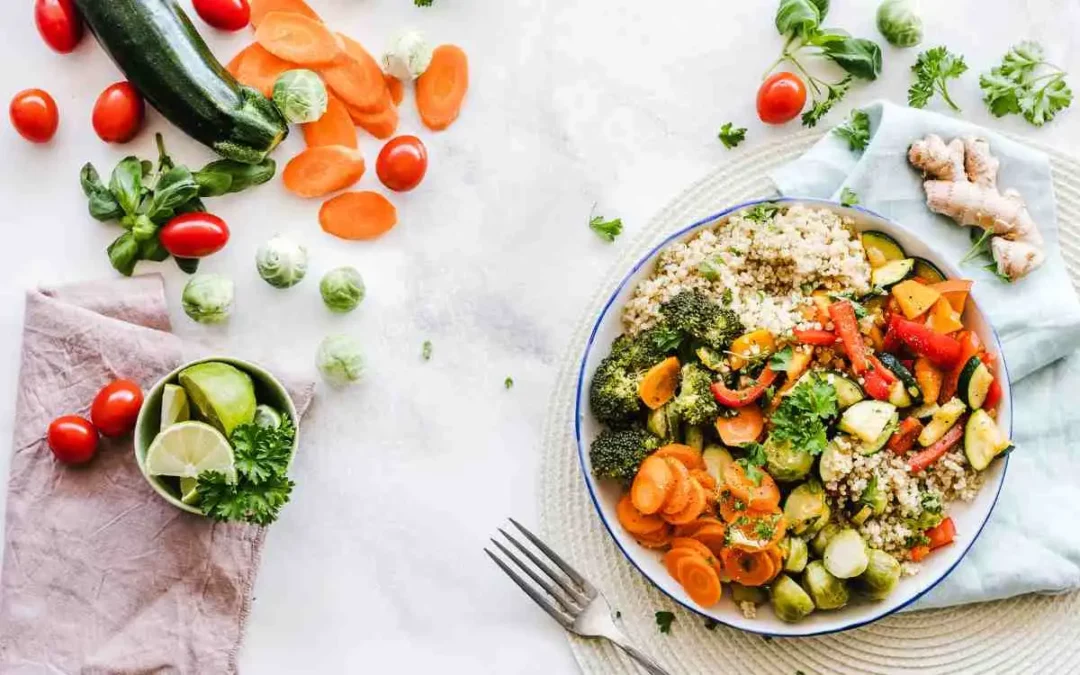A balanced diet is the cornerstone of good health. It provides your body with the nutrients it needs to function effectively and stay energized throughout the day. But with so much conflicting information online, understanding what a truly balanced diet looks like can be confusing. This guide simplifies the concept, breaks down the essential components, and offers practical meal examples to help you put the theory into practice.
What Is a Balanced Diet?
A balanced diet means consuming a variety of foods in the right proportions to provide the essential nutrients your body needs: carbohydrates, protein, fat, fiber, vitamins, and minerals. The key is to ensure you’re getting enough of each nutrient without overconsuming any one group.
Core Components:
- Carbohydrates – Your body’s main energy source (whole grains, fruits, vegetables)
- Proteins – For muscle repair and immune function (meat, fish, eggs, legumes)
- Fats – For hormone production and cell health (nuts, seeds, avocados, olive oil)
- Vitamins and Minerals – For overall health and function (fruits, vegetables, dairy)
- Fiber – Supports digestion and satiety (whole grains, legumes, veggies)
- Water – Vital for hydration and nearly every bodily function
Why Is a Balanced Diet Important?
- Supports optimal physical and mental performance
- Boosts immunity
- Reduces the risk of chronic diseases like heart disease, diabetes, and obesity
- Helps maintain a healthy weight
- Enhances mood and energy levels
Portion Control and Food Groups The Plate Method is an easy visual tool to help create balanced meals:
- ½ plate: Non-starchy vegetables (e.g., broccoli, spinach, bell peppers)
- ¼ plate: Lean protein (e.g., grilled chicken, tofu, lentils)
- ¼ plate: Whole grains or starchy vegetables (e.g., brown rice, quinoa, sweet potato)
- Add a serving of healthy fat (e.g., olive oil drizzle, a few nuts)
- Optional: A piece of fruit or low-fat dairy on the side
Daily Nutritional Recommendations (General Guidelines)
- Carbohydrates: 45–65% of daily calories
- Protein: 10–35%
- Fats: 20–35%
- Fiber: 25–38 grams per day
- Water: ~2–3 liters per day (more with physical activity)
Examples of Balanced Meals
1. Breakfast
- Whole grain toast with avocado and poached eggs
- Side of berries
- Herbal tea or water
2. Lunch
- Grilled chicken breast over a quinoa and mixed greens salad
- Olive oil and lemon dressing
- Small apple on the side
3. Snack
- Greek yogurt with chia seeds and a few almonds
4. Dinner
- Baked salmon with sweet potato and steamed broccoli
- Side of mixed greens
- Glass of water or herbal tea
5. Dessert (Optional)
- Fresh fruit salad or a small piece of dark chocolate
Tips for Maintaining a Balanced Diet
- Plan meals in advance to avoid unhealthy last-minute choices
- Eat mindfully: chew slowly and listen to hunger/fullness cues
- Limit processed foods, added sugars, and trans fats
- Include colorful fruits and vegetables to ensure diverse nutrients
- Stay hydrated throughout the day
Common Myths About Balanced Eating
- Myth: Carbs are bad. Reality: Whole carbs like oats and vegetables are essential.
- Myth: Fat makes you fat. Reality: Healthy fats are vital for body function.
- Myth: Skipping meals helps with weight loss. Reality: It can lead to overeating later.
Conclusion A balanced diet is not about strict limitations or labeling foods as “good” or “bad.” It’s about fueling your body with a variety of wholesome foods that nourish and sustain you. By focusing on balance, variety, and portion control, you can support long-term health, energy, and well-being. Start small, stay consistent, and enjoy the journey toward healthier eating.


